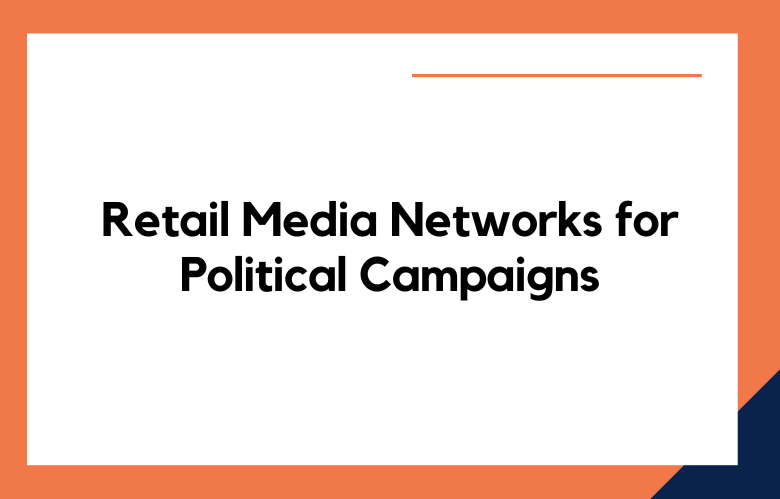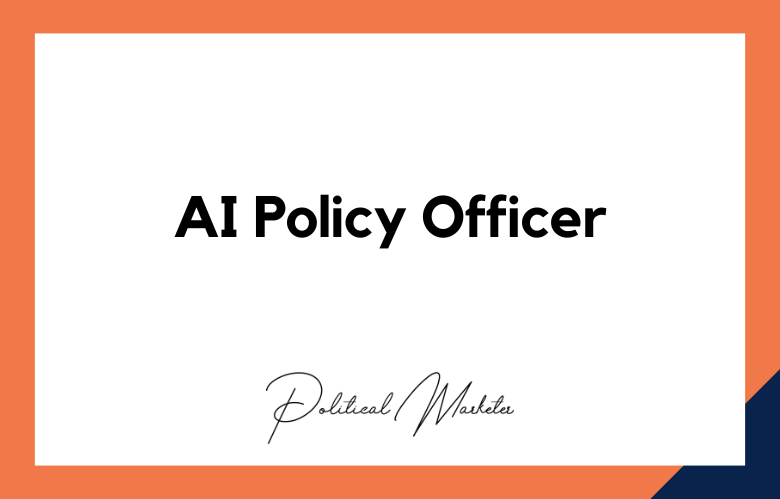Political campaigning has always been a challenging task. It requires a lot of strategic planning and execution to influence voters’ minds. However, with the advancement of technology, political campaigning has become much more straightforward. And the latest addition to this is leveraging retail media networks.
It is a game-changer, providing an excellent platform for political campaigns to target specific audiences, increasing their chances of winning. We will discuss how leveraging retail media networks can be a game-changer for political campaigns.
What is a Retail Media Network?
A Retail Media Network is an advertising platform that enables brands to advertise their products directly on retail websites.
Retailers like Walmart, Target, and Amazon have developed their networks by leveraging their vast customer databases and developing targeted ad campaigns.
This strategy has been a no-brainer for retailers, enabling them to monetize their e-commerce platforms. However, political campaigns are now realizing the potential of this concept for their own needs.
How do Retail Media Networks Work?
Retail media networks operate much like online ad networks, but instead of targeting web users, they focus on in-store shoppers.
These networks work with retailers to collect and analyze shopper data, then use this data to deliver targeted ads and offers to shoppers in real-time.
Retail media networks can be found in various retail environments, including grocery stores, drug stores, and gas stations.
How can Retail Media Networks be Utilized for Political Advertising?
The vast customer databases of retail media networks provide political campaigns with new opportunities to target their audience.
Retail Media Networks campaigns can display ads to specific groups of voters based on their purchasing history or interests.
A political campaign can use these ad campaigns for particular groups, for example, senior citizens, to spread their message. Retail Media Networks also allow you to track the success of a movement in real-time.
Case Study: Scott Walker’s Campaign for Governor of Wisconsin in 2018
Scott Walker, the Iowa Republican Governor, utilized Retail Media Networks during his 2018 reelection campaign for governor of Wisconsin.
Walker’s campaign targeted swing voters with video ads on Walgreens and Target websites.
The ads were targeted based on geographical data and voting patterns, ensuring they reached the right audience. With this strategy in play, Walker was able to increase support and win his race.
How Retail Media Networks Can Help Political Campaigns
In recent years, retail media networks have become an increasingly popular advertising channel for retailers to promote their products through targeted ads.
However, the potential of retail media networks extends beyond just the retail industry, and political campaigns can leverage this powerful tool to reach and engage with a broader audience.
This article explores how political campaigns can use retail media networks to gain an edge in a crowded political playing field.
How Retail Media Networks Can Boost Your Political Campaign?
Political campaigns are more complex and challenging than ever before. The influx of digital technologies and the sheer amount of data available have transformed how we run political contests.
In the search for new audiences, advertising experts are looking towards an unexpected source: Retail Media Networks.
These networks were initially developed to help retailers increase sales and reach new audiences, but they have since become a vital tool for political campaigns.
We’ll introduce you to this concept and walk you through how it can take your political campaign to the next level.
Leveraging Retail Media Networks for Political Campaigns: An Innovative Strategy
The world of political campaigning has been evolving rapidly over the past decade, with technological advancements revolutionizing how candidates engage with voters.
One innovative strategy that has recently gained traction is using retail media networks for political campaigns.
Retail media networks offer a unique way to reach voters when they are most receptive to advertising messages – while making purchasing decisions. We will explore how political campaigns can leverage retail media networks and this strategy’s benefits.
Benefits of Leveraging Retail Media Networks
More Precise Targeting
Retail media networks analyze online shopper behavior and purchase history to understand their target audience better.
Political campaigns can use this information to create more precise targeting for their ads. Rather than relying on broad demographics or interests, campaigns can use retail media networks to target audience segments based on purchase behavior.
For example, a campaign could target people who frequently buy organic food, as they are likely to care about environmental issues.
Increased Ad Effectiveness
Retail media networks can offer campaigns more effective ads by leveraging retargeting capabilities and matched audiences.
This means that campaigns can reach people who have previously engaged with their website or social media campaigns or match audiences with similar purchase behaviors.
These audience segments are more likely to engage with ads and take action, such as donating or volunteering.
Accurate Measurement
Retail media networks provide detailed reporting and measurement of ad performance, giving political campaigns better insight into the effectiveness of their ads and how to optimize them.
They can track click-through rates, conversion rates, and cost per action, allowing campaigns to adjust their targeting and messaging as needed.
Cost-Efficiency
Retail media networks can be more cost-efficient for political campaigns than traditional advertising channels.
The precise targeting and measurement capabilities can lead to better ROI and less ad waste. Retail media networks often offer self-serve platforms, which allow campaigns to set their budget and adjust their campaign as needed.
Increased Reach
Retail media networks offer political campaigns the opportunity to reach a wider audience—many retail media networks partner with retailers, giving campaigns access to a diverse audience base.
This can help campaigns get people who may not follow them on social media or subscribe to their email list.
Conclusion
Leveraging retail media networks for political campaigns is undoubtedly a game-changer. These networks offer a platform for campaigns to reach specific demographics with tailored ads, making them more effective and efficient while being cost-effective.
Retail media networks allow campaigns to understand and target their audiences’ needs, resulting in the possibility of gaining more support.
It’s important to note that there are risks associated with this advertising platform. However, with proper ethical data sourcing and preventive measures in place, these risks can be reduced.
Ultimately, leveraging retail media networks for political campaigns can revolutionize how political campaigns are run and could effectively reach voters in future elections.
Call: +91 9848321284
Email: [email protected]
Leveraging Retail Media Networks for Political Campaigns: FAQs
What are retail media networks in the context of political campaigns?
Retail media networks refer to advertising ecosystems created by retail companies that political campaigns can use to target voters via digital touchpoints like websites, apps, and in-store displays.
How can political campaigns benefit from retail media networks?
They allow campaigns to reach specific demographics based on consumer behavior, shopping data, and location targeting, improving message relevance and ROI.
Why are retail media networks becoming relevant for politics?
As data privacy rules limit third-party cookies, retail networks offer first-party data and access to vast, loyal customer bases, making them valuable for voter outreach.
Can retail media help micro-target swing voters?
Retail networks provide granular data that enables campaigns to micro-target audiences based on behavioral segments, interests, or regional issues.
What type of voter data can retail networks provide?
They offer insights such as purchase history, location, demographic profiles, and behavioral trends that campaigns can use for targeting and messaging.
How are ads delivered through retail media networks?
Ads are shown across mobile apps, online stores, and digital kiosks, reaching users at high-engagement points during their shopping journey.
Are retail media networks compliant with political ad regulations?
Most large retail networks adhere to advertising transparency standards, but campaigns must still follow local election rules and disclosure requirements.
How cost-effective is using retail media in campaigns?
Retail media can be more efficient than traditional display ads because of their higher targeting accuracy, which reduces wasteful impressions and increases conversions.
Can retail media networks be used for grassroots mobilization?
Localized retail data allows campaigns to encourage store-level or community-based event participation, canvassing, and voter registration efforts.
Which platforms offer political access to retail media advertising?
Major retailers like Amazon, Walmart, Target, and Instacart operate retail media networks with ad-buying portals that campaigns can leverage.
How does personalization work in retail media advertising?
Campaigns can deliver personalized political messages to voters based on their shopping behavior, regional preferences, and inferred interests.
Is retail media better suited for national or local campaigns?
It works well for both, benefiting local or constituency-based campaigns targeting specific geographic or community-based voter blocks.
What kind of ad formats can political campaigns use?
Retail media supports banner ads, sponsored listings, shoppable videos, native ads, and interactive formats integrated within retail apps.
Can campaigns measure performance through retail networks?
Yes, platforms offer dashboards with real-time analytics on impressions, clicks, conversions, and sometimes, foot traffic or sales uplift.
What is the advantage of using first-party data in political campaigns?
First-party data is consented, privacy-compliant, and more reliable, allowing campaigns to reduce reliance on obsolete third-party data.
Are there limitations or risks in using retail media for politics?
Some retailers may restrict political content, and over-personalization could risk voter discomfort if perceived as invasive.
How do retail media networks compare to social media ads?
Retail media networks often deliver higher purchase-intent targeting and less content saturation, whereas social platforms offer broader engagement and virality.
How can retail media networks support GOTV (Get Out the Vote) efforts?
Campaigns can use localized promotions and digital placements near election dates to remind, motivate, and guide voters in casting their ballots.
Can AI improve retail media targeting in campaigns?
Yes, AI-driven algorithms can optimize ad placements, predict voter behavior, and tailor content dynamically for maximum voter influence.
Should political consultants integrate retail media into their omnichannel strategy?
Combining retail media with social, email, and traditional channels ensures cohesive outreach and maximizes voter engagement across all touchpoints.











